
Situated on the River Vltava in central Bohemia, Prague has been the political, cultural, and economic centre of the Czech state for more than 1100 years. The city proper is home to more than 1.2 million people, while its metropolitan area is estimated to have a population of over 1.9 million.

Since 1992, the extensive historic centre of Prague has been included in the UNESCO list of World Heritage Sites. Nicknames for Prague have included "the mother of cities" (Praga mater urbium, or "Praha matka měst" in Czech)", "city of a hundred spires" and "the golden city".
Bertramka Mozart Museum
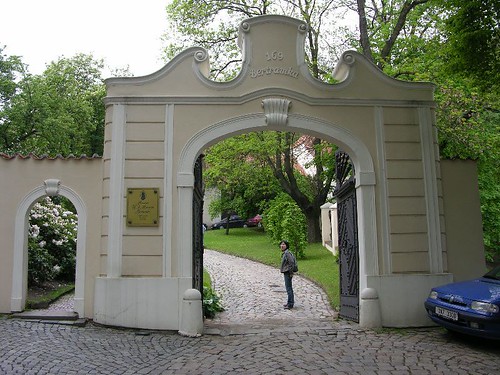
In 1787, shortly before the premiere of Don Giovanni at the Estates Theatre, Wolfgang Amadeus Mozart moved to Bertramka to finish his masterpiece. Originally a vineyard estate located outside the Prague city walls, Bertramka was the romantic summer residence of his friends, the Dušeks, a couple of leading Czech musicians. This fine setting gave Mozart the peace and quiet he craved, and inspired him to compose the concert aria and scene for soprano "Bella mia fiamma, addio", which he dedicated to his hostess, the outstanding singer Josefína Dušková. In 1791 Mozart stayed again at Bertramka, when he came to Prague to rehearse his coronation opera on Titus.
Today, as Prague has grown, Bertramka borders on the city centre. The part of the villa that served as the living quarters is now a museum and features a permanent exhibition on W.A. Mozart and the Dušeks. Remarkably, Bertramka is preserved in more or less the same state as Mozart knew it. Classical ConcertsFrom April to September, and around Christmas, Bertramka presents a programme of classical concerts, some with a "living history" element. Performers re-enact the days of the 18th century in period costume.
The largest of the residential salons, with specially commissioned wall paintings and where music was played during Mozart's life, is the setting for these chamber music concerts.
The heritage of the music room, its connection with Mozart and the closeness of the musicians create an exceptional atmosphere for the concerts. On warm summer evenings, performances move to the beautiful, natural environment of the villa gardens.
Bethlehem Chapel

Bethlehem Chapel (Betlemska Kaple) is set on a delightful little square in the heart of the Old Town, Bethlehem Square (Betlemska Namesti).
Bethlehem Chapel has a torrid history, one which reflects the many religious wars that had such an impact on Prague and the Czech Republic as a whole.
The church was founded in 1391, as a holy place where church services could be held in the Czech language. Jan Hus, founder of the Hussite movement and a Czech national hero, preached here between 1402-1412.
Shortly afterwards, the Czech Technical University took control of it, until 1661, when it was altered from a protestant to a catholic church by the Jesuits.
In 1786, a major section of the chapel was destroyed. It was reconstructed in the 20th century under the instruction of the architect J. Fragner. Parts of the original walls remain in the structure. Today, Bethlehem Chapel holds religious services. Plus it is a popular venue for classical music concerts. During the winter the inside is heated, although it is still advisable to wear warmish clothing for the concerts.
Charles Bridge

Charles Bridge (Karluv Most) is a 14th century stone bridge linking the two sides of Prague. This magnificent structure is one of the city's finestattractions, and is the main pedestrian route connecting the Old Town with Mala Strana and Prague Castle.
From Charles Bridge visitors enjoy fairytale views of the Prague skyline. The wide expanse of the river flows beneath it, flanked on both sides by elegant buildings. Prague Castle towers above in its eminent position. Here you are truly in the centre of the city.
Charles Bridge throngs with people during the day. Street artists sketch and musicians play; look out for the jazz band, who are particularly entertaining. But for a truly romantic and less crowded stroll, try early morning or any time in the evening.
King Charles IV commissioned the bridge. The foundation stone was laid in 1357. Charles IV's favourite architect and builder, Peter Parler, oversaw the majority of the work. The initial idea was to build a functional construction for knight tournaments, and for many years the only decoration on the bridge was a simple crucifix. Later, the Catholic desire for ornamentation resulted in 30 statues being erected between 1600 and 1800.
There are now 75 statues on Charles Bridge, but most are copies, as floods and catastrophes over the centuries damaged the originals. Perhaps the most interesting, as well as the oldest, is that of John of Nepomuk (8th from the right as you cross towards Prague Castle).
The entrance to Charles Bridge is marked at both ends by towers: the Old Town Bridge Tower and the Mala Strana Bridge Tower.
The Church of Our Lady

The Church of Our Lady Before Tyn (Týnský Chrám) dominates one side of the Old Town Square. The spires of this powerful looking Gothic church (with a Baroque interior) can be seen from all over Prague.
The church was founded in 1385 during a tumultuous period when ‘heretic’ Hussites were being slaughtered by the ruling Roman Catholics. As part of this, Catholic Jesuits took over the church, recasting the bell and replacing the Hussites symbolic chalice with a large figure of Mary nailed between the towers.
The Church of Our Lady Before Tyn is impressive by day and striking by night, lit up against the dark night sky. Take a close look at the two spires. They are not symmetrical. This is characteristic of the gothic architecture of the time and is a representation of both the masculine and feminine sides of the world.
Mala Strana
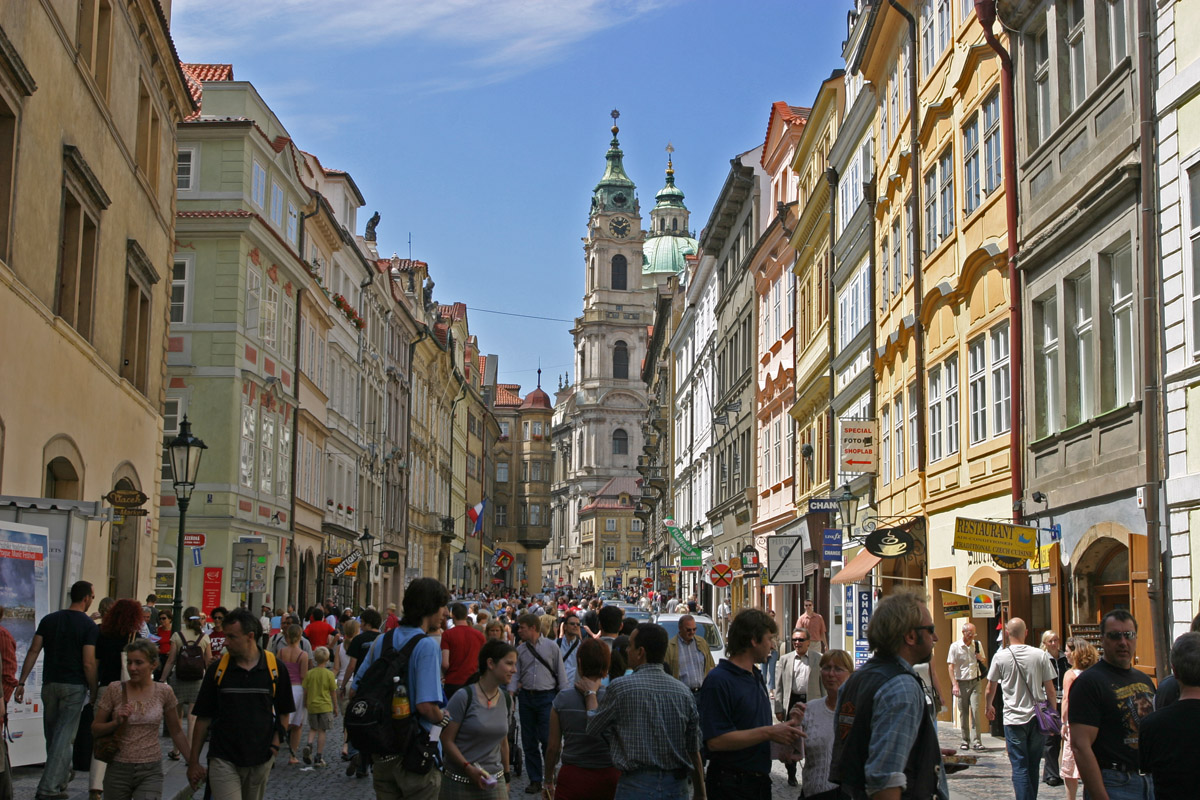
Mala Strana (the Lesser Town or Little Quarter) clusters around the foothills of Prague Castle, on the opposite sideof the river to the Old Town.
Almost too picturesque for its own good - with its ancient burgher houses, quaint side streets and St. Nicholas Church - Mala Strana is a favourite setting for films and commercials.
Most tourists pass through Mala Strana as they cross from the Old Town over Charles Bridge and climb up Nerudova Street to reach Prague Castle.
At the heart of Mala Strana is a baroque square, Malastranske Namesti. Here, and all around in the cobblestone side streets, there is plenty to explore in the small boutique shops, churches, traditional Czech pubs and restaurants, some located in ancient cellars, others offering fine views of the river.
Mala Strana started life in the 8th century as a market settlement. In 1257 Premysl Otakar II granted it town status and in 1360-1362 fortifications were built by order of Charles IV. This has been known for centuries as the Hunger Wall, built, it is believed, to give employment to the poor during a period of famine.
Mala Strana was almost destroyed twice: first during a battle between the Hussites and the Prague Castle garrison in 1419, and then in the Great Fire of Prague in 1514. Renaissance buildings and palaces replaced the destroyed houses.
The baroque churches and palaces that give Mala Strana its charm date from the 17th and 18th centuries.
Municipal House
Municipal House (Obecni Dum) is the premier Art Nouveau building in Prague and was completed in 1911. On 28th October 1918, the historic proclamation of the independent state of Czechoslovakia took place here.
Situated on the site of the former Royal Court Palace, Municipal House is the main attraction on Republic Square. It is just a few minutes walk from both the Old Town Square & Wenceslas Square. On the outside, this stunning building has intricate stone work, gold trimmings, stained glass windows and magnificent frescos. Inside, Municipal House is divided into several areas. It hosts some of the best classical concerts in Prague, there are regular exhibitions, and it houses the first-class Francouzska Restaurant.
Municipal House is home to the Czech National Symphony Orchestra and at its heart is the Smetana Hall, one of two main concert halls in Prague (the other is the Dvorák Hall at the Rudolfinum).
Classical concerts in the Smetana Hall involve some of the largest orchestras to play the city.
The interior of the Smetana is decorated with works by leading Czech artists from the early 20th century - most notably by the famous Alfons Mucha. The hall is also used occasionally as a ballroom.
The National Museum

The National Museum in Prague is set in a commanding position at the top of Wenceslas Square, dominating the whole area. This is the largest and oldest museum in the Czech Republic, and on some evenings it is the grand setting for classical music concerts. This monumental, neo-renaissance building was designed by Josef Schultz as an architectural symbol of the Czech National Revival. The National Museum was built on the site of the former Horse Gate, so named because Wenceslas Square once served as the main Prague horse market.
Construction of the National Museum lasted from 1818-1891. The entrance hall is very grand, with great sweeping staircases and intricate stonework. Some of the exhibition rooms however are in need of regeneration. A major reconstruction is planned.
The permanent exhibitions in the National Museum include:
• Primeval history of Bohemia, Moravia and Slovakia
• Mineralogical & petrological collections
• Zoological collections
• Palaeontological collections
• Anthropological collections
Of particular interest to children is the large collection of stuffed animals (bears, tigers, etc.), plus reconstructions of extinct animals, like an enormous mammoth, and a gigantic emu like bird that once roamed in New Zealand. During the winter the inside is heated, although it is still advisable to wear warmish clothing for the concerts. As you face the National Museum, to its left is the world headquarters for Radio Free Europe. The building to the left of that is the Prague State Opera.
The Astronomical Clock
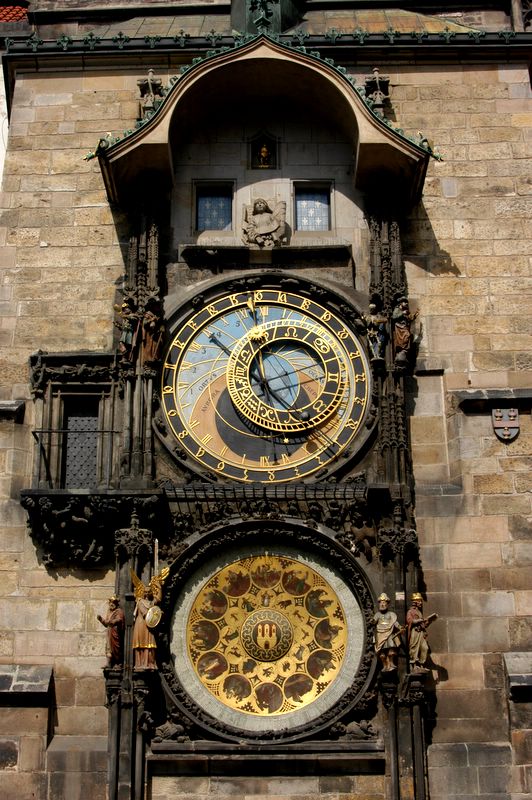
The Astronomical Clock on the side of the Old Town Hall Tower dates back to the 15th century. To appreciate this intricate construction to its fullest, join the crowd in front of the tower to observe the procession of the Twelve Apostles: on the hour, every hour, a small trap door opens and Christ marches out ahead of his disciples, while the skeleton of death tolls the bell to a defiant statue of a Turk. Below the Astronomical Clock are 12 medallions with the signs of the zodiac, added by Josef Manes in 1865. The Old Town Hall Tower is one of the most striking buildings in Prague, built in 1338. Inside is a staircase and an elevator. For a minimal fee, visitors can climb to the top to enjoy wonderful views over the Old Town Square and all of the Old Town.
In 1364 the Old Town Hall Tower was joined to a private house beside it, which in turn was knocked into other houses to create the Old Town Hall as we know it today.
Extensive renovation in 1470 refurbished the Old Town Hall in the Gothic style. Today the Old Town Hall houses the Prague Tourist Information Centre.
Old Town Square
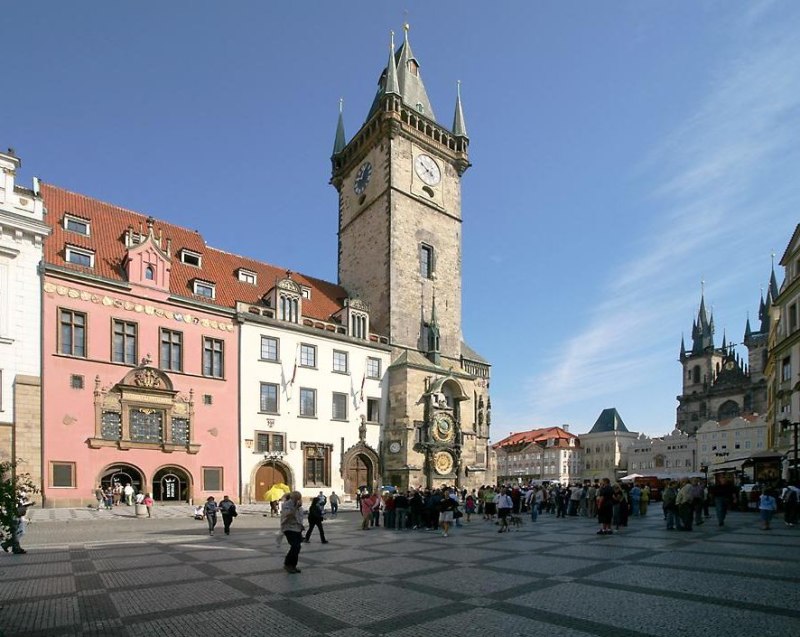
Step into the Old Town Square in Prague and journey back in time, 600 or 700 years. As you stand in awe, the dramatic history of Prague permeates the air.
The Old Town Square (Staromestske Namesti) is one of two main squares in the city centre (the other is Wenceslas Square, 5 minutes walk away). With its ancient buildings and magnificent churches, this is one of the most beautiful historical sights in Europe.
Dating back to the late 12th century, the Old Town Square started life as the central marketplace for Prague. Over the next few centuries, many buildings of Romanesque, Baroque and Gothic styles were erected around the market, each bringing with them stories of wealthy merchants and intrigue. The Old Town Square's most notable sights are the Church of Our Lady before Tyn, the Old Town Hall Tower & Astronomical Clock and the stunning St. Nicholas Church. At the centre of the Old Town Square is the Jan Hus statue, erected on the 6th July 1915 to mark the 500th anniversary of the reformer’s death. The groundswell of supporters for his beliefs during the 14th and 15th centuries eventually led to the Hussite wars.
Sit back and soak up the atmosphere over a coffee at one of the many pavement cafés surrounding the square.
Prague Castle
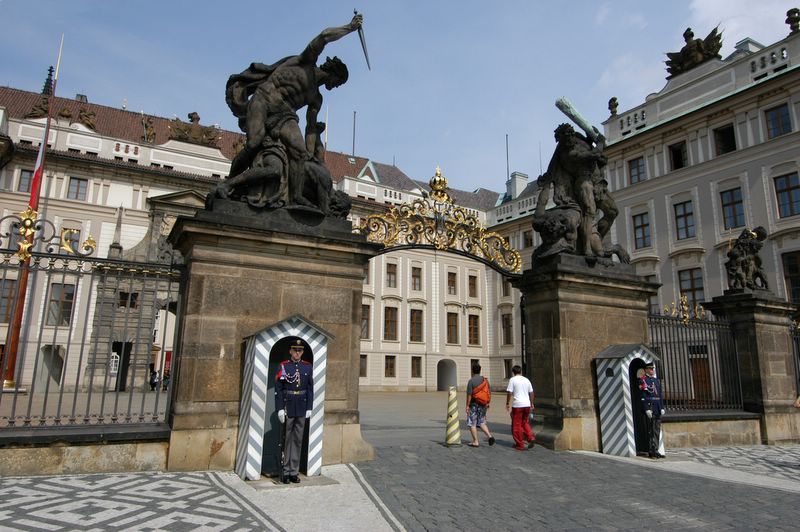
Prague Castle is the largest medieval castle complex in Europe and the ancient seat of Czech kings throughout the ages. It is Prague's premier tourist attraction.
Several destructive wars and fires (and the subsequent renovations), along with differing political forces have combined to create an intriguing mix of palaces, churches and fortifications.
The Prague Castle complex consists of Saint Vitus Cathedral (the most recognisable landmark in the city), viewing towers, museums and art galleries, a monastery, Golden Lane, several palaces, including Lobkowicz Palace, and St. George's Basilica; the latter being a popular venue for early evening classical concerts. The first known building on the site of Prague Castle was erected in the 9th century. In the 12th century it was replaced by a Romanesque palace. In the 14th century it was rebuilt in the Gothic style, under the reign of Charles IV. A further reconstruction of the Royal Palace then took place under the Jagellons at the end of the 15th century. Following a fire in 1541, Prague Castle underwent further works. The Spanish Hall was added during the reign of Rudolf II. And final alterations were made by Empress Maria Theresa, under the direction of the celebrated architect M. Pacassi. After World War I, renovations to the castle buildings and to the Prague Castle Gardens were undertaken by the architect J. Plecnik. Today, Prague Castle is the seat of the President of the Czech Republic and serves as the historical and political centre for both city and state. The Changing of the Guard at the front gates takes place every hour. At noon the ceremony includes a fanfare.
St. Nicholas Church

Beautiful St. Nicholas Church at the Old Town Square was completed in 1735. It replaced a parish church, mentioned in records dating back as early as 1273.
It wasn't until 1901, when the Krenn House was demolished, that its lovely white façade became visible to the rest of the Old Town Square. It simply gleams, hit by the sun during the day and lit by strong white lights at night.
St. Nicholas is a Baroque church, decorated with sculptures by Antonín Braun. The interior design was inspired by the chapel of St. Louis-des-invalides in Paris. The delicate stucco decoration was executed by Bernardo Spinetti, and the frescos are by Peter Adam the Elder.
In 1781 decoration inside St. Nicholas was removed after emperor Josef II ordered the closure of all monasteries without a social function.
From 1870-1914 St. Nicholas became Russian Orthodox. Then, during the second World War, Czech army units were stationed here and artists were set to work restoring the church.
After the war, St. Nicholas was handed over to the Czech Hussite movement, with whom it remains today. It now serves as both a church and a magnificent venue for classical concerts.
During the winter the inside is heated, although it is still advisable to wear warmish clothing for the concerts.
St. Vitus Cathedral
To many people, St. Vitus Cathedral is Prague Castle. While the enormous Prague Castle complex includes many fine buildings, St. Vitus is the one that dominates the city skyline and is visible from far and wide. St. Vitus is the spiritual symbol of the Czech state. A Gothic masterpiece, work on the cathedral was commissioned by Charles IV and began in 1344 upon the site of an earlier 10th century rotunda. In all, it took nearly six centuries to complete.
Its first builders, Matthias of Arras and later Peter Parler, built the chancel with a ring of chapels, St. Wenceslas Chapel, the Golden Portal and the lower part of the main steeple.
The final phase of construction only ended during the period 1873-1929.
As well as being the largest and most important temple in Prague, St. Vitus Cathedral also oversaw the coronations of Czech kings and queens. In the chancel of the cathedral, in front of the high alter, is the royal mausoleum. Below this, in the crypt, there are the royal tombs. Czech kings and queens and patron saints are interred here. St. Wenceslas Chapel is decorated with frescoes and semi-precious stones. A door in the south-western corner of the chapel leads to the Crown Chamber in which the Bohemian Coronation Jewels are stored.
Wenceslas Square
Wenceslas Square in Prague is a vibrant area of hotels, apartments, restaurants, bars, clubs and shops. Wenceslas Square (Vaclavske Namesti) is one of two main squares in the city centre (the Old Town Square is the other, 5 minutes walk away), and as such is a very popular place to stay. There is nightlife and entertainment all around Wenceslas Square, and an array of international shops. Prague's main shopping area begins here. Wenceslas Square offers easy walking access to all Prague's sights & attractions. From here you can reach anywhere in the city centre. The 750m long and 60m wide boulevard that makes up Wenceslas Square was laid out over 600 years ago during the reign of Charles IV. It was originally used as the Prague horse market. Over the years the square has been a regular parade ground for all kinds of organisations and political parties. From anti-communist uprisings to celebrations of national sporting achievements, Wenceslas Square is where the Czech's come to let off steam. It can comfortably hold up to 400,000 people! At the top of Wenceslas Square, the statue of St. Wenceslas on his horse cuts a striking figure. This is good King Wenceslas (Vaclav), murdered over a thousand years ago by his brother, and now a Czech national hero. In front of St. Wenceslas are two plaques in memory of those killed during the Communist era. One is dedicated to Jan Palach, who set himself on fire in protest at the Soviet invasion.
Behind St. Wenceslas is the monumental National Museum, and just off to the left is the Prague State Opera.
Transportation
Prague has one of the best public transportation systems in Europe. The metro, trams and buses are used by two-thirds of Prague's population and cover the majority of the city and outskirts. Especially the metro makes getting around town a breeze since it enables you to cover long distances in a matter of minutes. If you can't continue to your destination on foot, you'll be able to catch a tram or bus from near the subway station.
My Czech Republic offers:
Prague River CruisesBook one of our popular boat trips on the Vltava for a unique Prague experience!View cruises
If you are flying into Prague, your first concern probably is how to get to your destination from the airport. The Airport - Downtown section is a good one to read.
To move around town, we recommend using public transport over driving or taking a taxi. The traffic situation in the city center has become pretty bad in the past decade and not many good things can be said about Prague taxi drivers either. If you do need to drive or take a cab, read the Parking and Taking a Taxi pages.
If you're going to be staying in Prague for a few days, you may want to buy a tourist pass that will enable you to use any type of mass transit as many times as you want within the time period for which your pass is valid. A complete list of passes and other ticket information is provided in Tickets & Passes.




Prague is really a lovely place where you can experience their culture, history and most fascinating places which won't let you leave this place, Old town square is my favorite place. Where you find people taking walk, breaks, eating and taking pictures. the atmosphere there is very friendly and touristic. The best way to see the square is with the guided walking tour so that you could get to know it's history and culture. which is really very amusing.
ReplyDeletePrague places to visit
This is really a very enticing post with some very good pictures.
ReplyDeletemimi
prague sightseeing tours